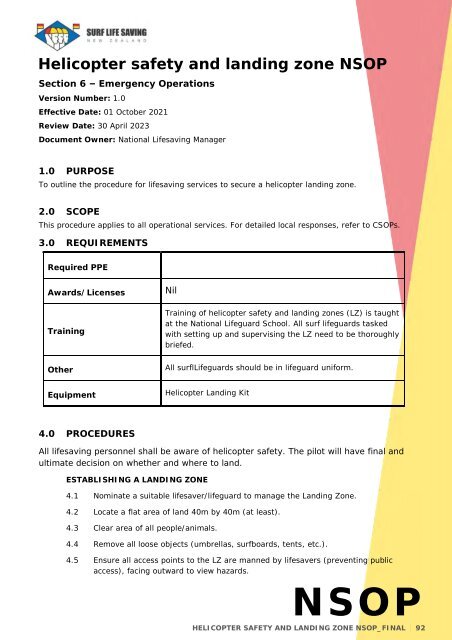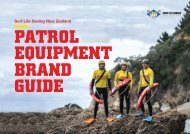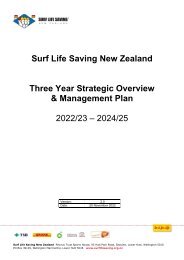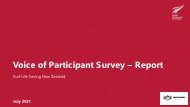National Standard Operating Procedures - Jul 2022
Full NSOP Manual
Full NSOP Manual
Create successful ePaper yourself
Turn your PDF publications into a flip-book with our unique Google optimized e-Paper software.
What is a Critical Incident Debrief?<br />
A Critical Incident Debrief consists of a combined Operational and Wellbeing Debrief. The<br />
goal of the debrief is to understand and record what happened and ensure that member<br />
wellbeing is checked and resources are provided. The Wellbeing Debrief is the priority.<br />
A Critical Incident Debrief has three main steps:<br />
1. Operational and Wellbeing debrief.<br />
2. Names and details recorded<br />
3. Details sent to Benestar for Well-Checks to occur at 48 hours and two weeks (with<br />
permission) see 6.0.<br />
In instances where time is limited, such as in the early evening, it is appropriate to conduct a<br />
Wellbeing Debrief and undertake an Operational Debrief at a later time.<br />
5.0 PROCEDURES<br />
Critical Incident Procedure<br />
5.1 Determine if support is required.<br />
5.2 Call 0800 SAVE LIFE to activate local Peer Support network (applies to all Regions).<br />
5.3 State location and give brief details of incident.<br />
5.4 SurfCom will activate peer supporters by text.<br />
5.5 Peer supporters should reply to the SurfCom text with their availability.<br />
5.6 Once 2-3 peer supporters have confirmed their response, additional peer supporters<br />
will be stood down by SurfCom.<br />
5.7 The debrief should include all those who were directly involved in the incident<br />
operations and should be undertaken in a private place.<br />
5.8 The operational part of the debrief is led by a SLSNZ staff member, Duty Officer or<br />
senior lifeguard.<br />
5.9 The wellbeing part of the debrief is usually led by a designated peer supporter.<br />
6.0 Conducting a Critical Incident Debrief<br />
6.1 The person leading the Operational Debrief should:<br />
- Introduce themselves as the debrief lead and their position within the organisation<br />
- Gain an understanding of and take notes on what happened<br />
- Document who was involved and what their roles were<br />
- Identify any learnings (avoid any blame and keep this part brief)<br />
- Provide an opportunity for members to ask questions<br />
- Introduce a peer supporter to take the Wellbeing Debrief (or delegated person)<br />
6.2 The person taking the Wellbeing Debrief (usually a Peer Supporter) should:<br />
- Acknowledge the significance and impact of the incident<br />
- Normalise the common stress reactions<br />
- Highlight the support available (Benestar, Peer Support and SLSNZ website)<br />
- Explain the Well-Check process and promote as normal process<br />
- Get permission of group to pass on names and numbers to Benestar<br />
NSOP<br />
CRITICAL INCIDENT PROCEDURE NSOP_FINAL 85
















